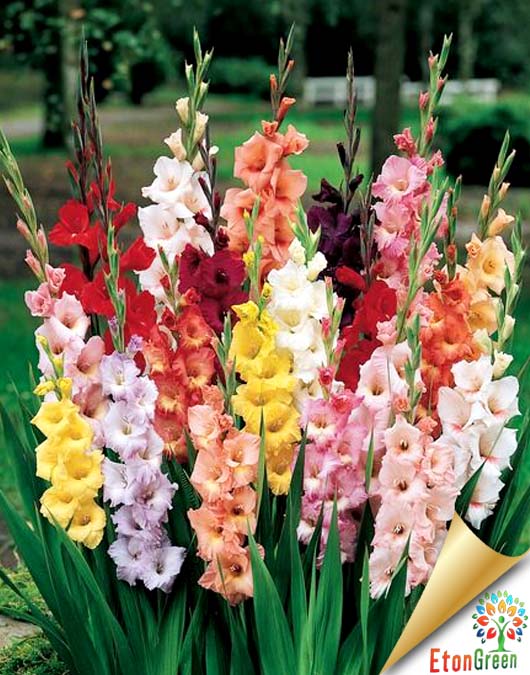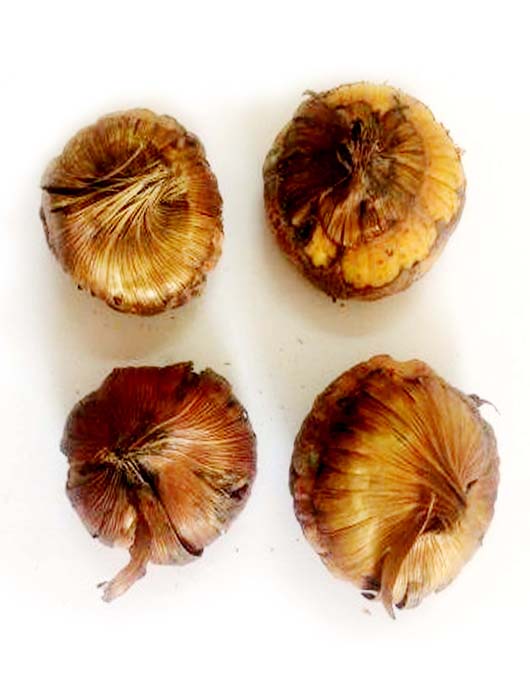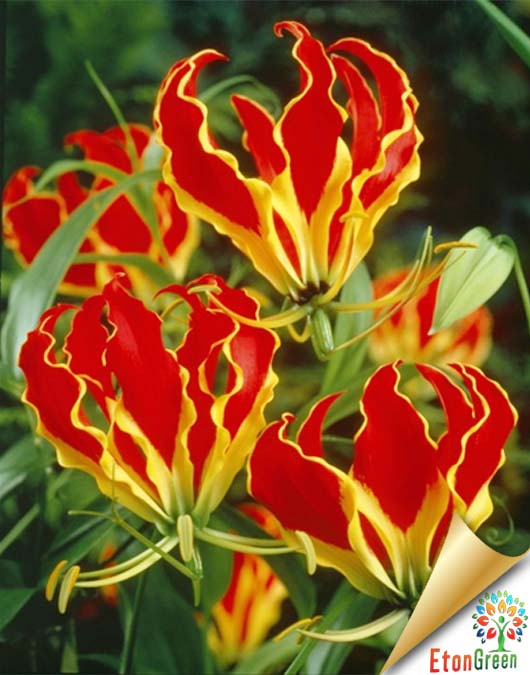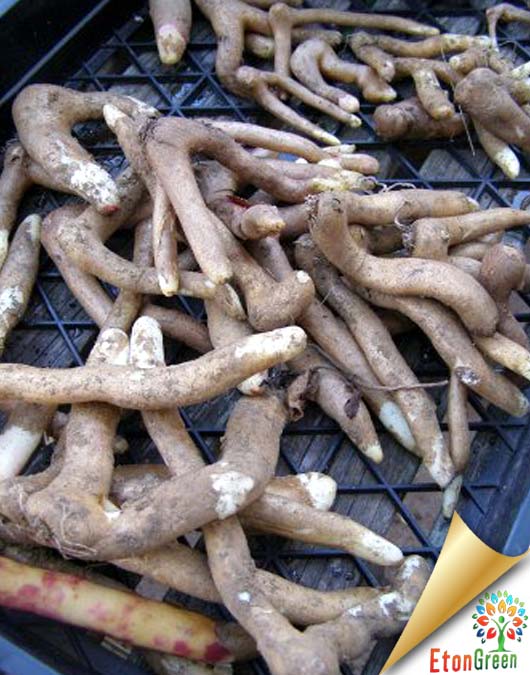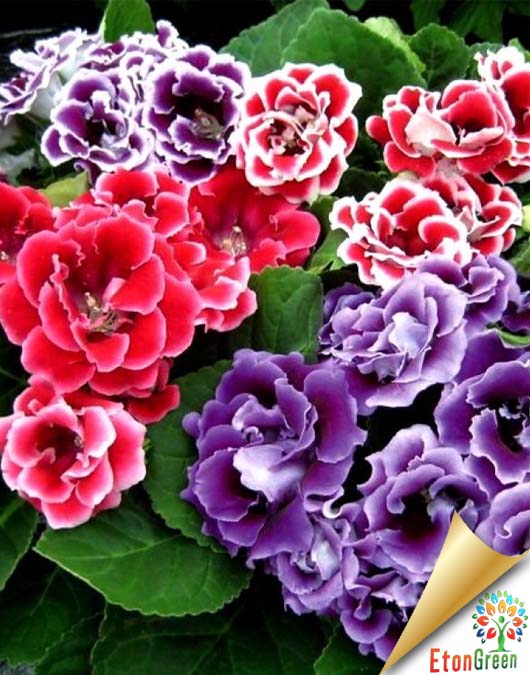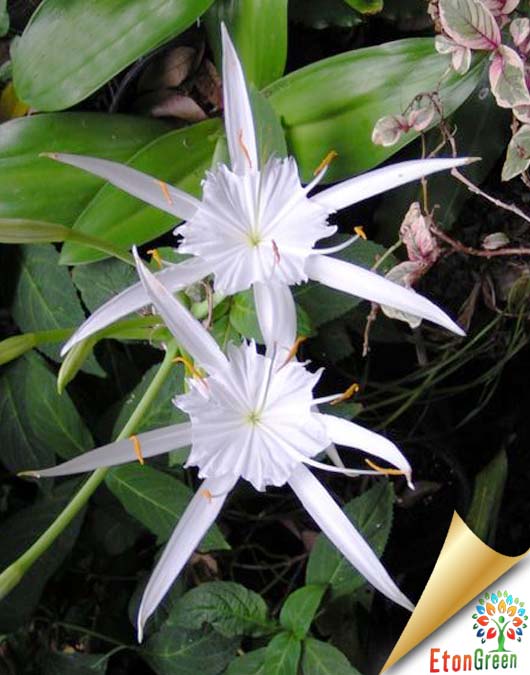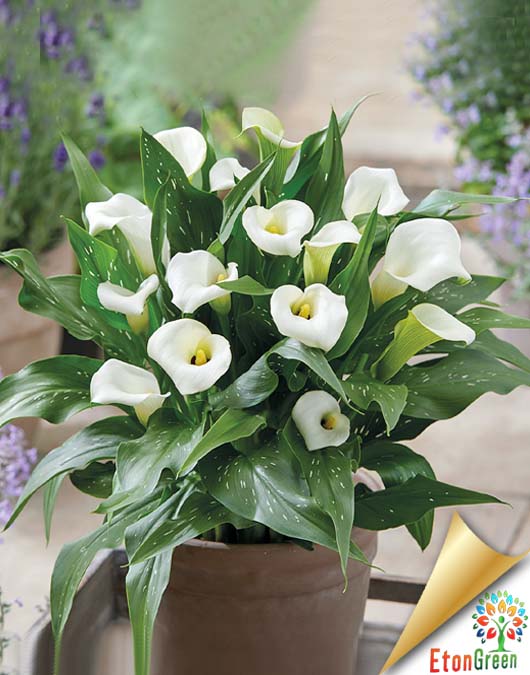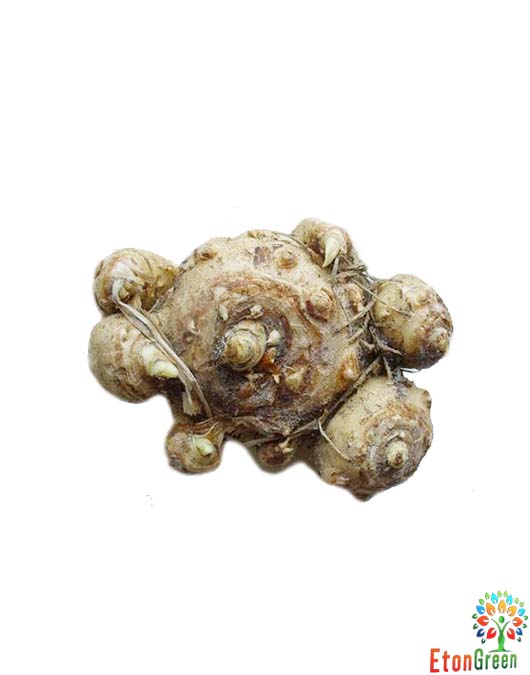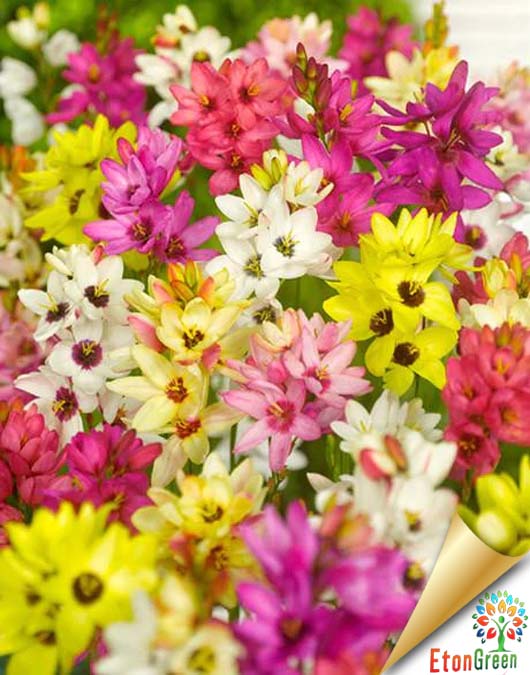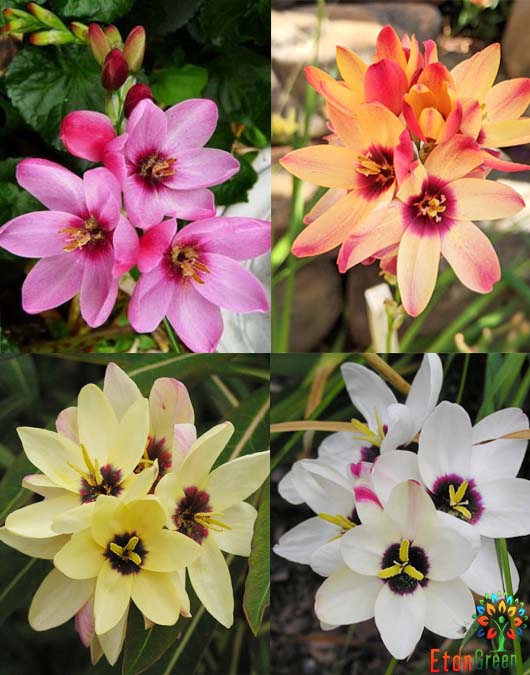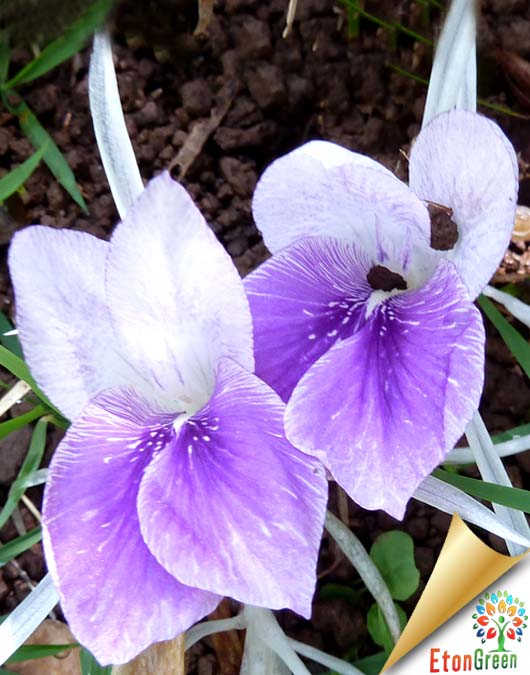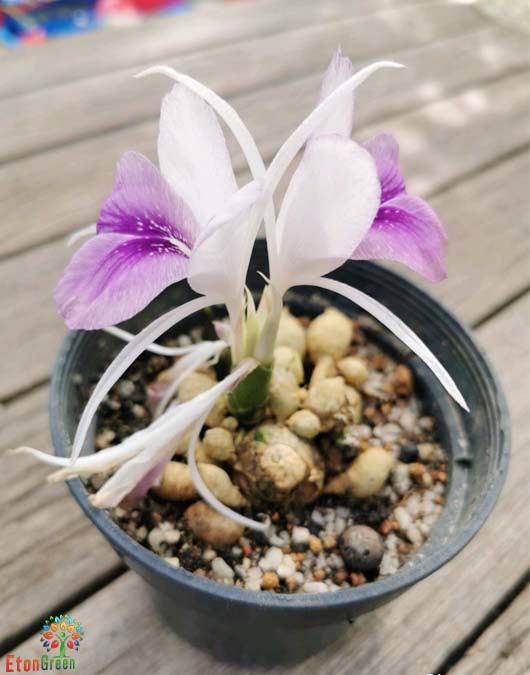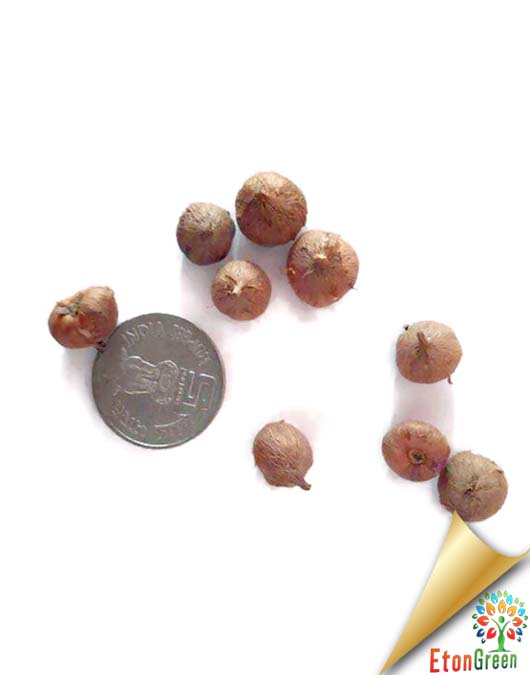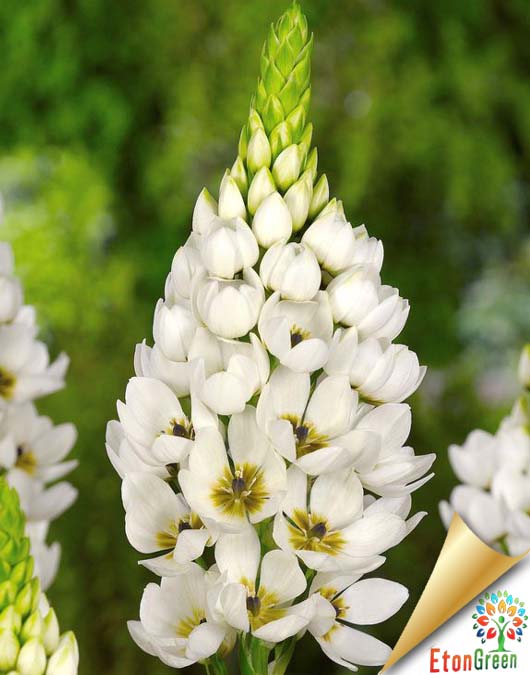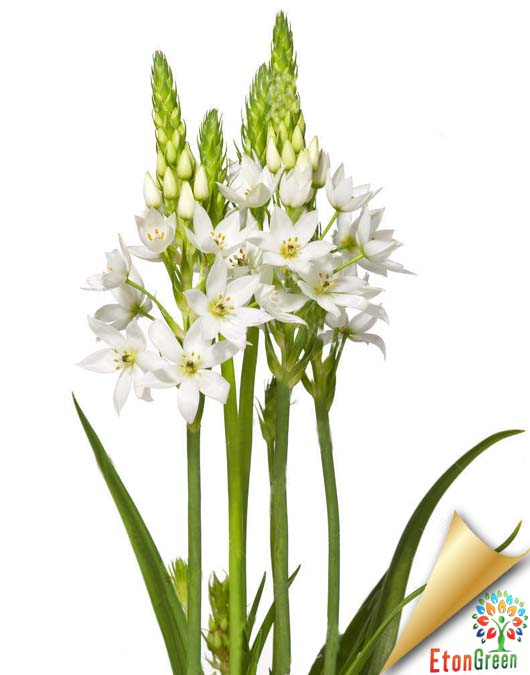- Shipping charge ₹ 90 for entire order
- Pick these easy-to-grow varieties for the best blooms. It is a rhizomatous herbaceous perennial plant, evergreen where rainfall and temperatures are adequate.
- It has large clumps of broad, arrow shaped dark green leaves up to 45 cm long.
- The inflorescences are large and are produced in spring, summer and autumn, with a pure white spathe up to 25 cm and a yellow spadix. The spadix produces a faint, sweet fragrance.
- Dig up the rhizomes in autumn, usually after the first frost and store for winter.
- Dig a hole about three times as deep as the height of the bulb.
- Set the bulb in the hole, pointy end up, then cover with soil and press firmly
- Space bulbs 8 to 10 inches apart
- Water thoroughly after planting
- Use the potting mix for bulb plantation as Garden soil + Compost + Perlite + Sand (2:2:1:1) Soil + Cocopeat + vermicomposting (2:1:2)
- Keep them adequately fertilized and watered, misting the plant every so often to keep the ambient humidity high
- They are susceptible to aphids so, take a look closely and apply insecticide.
- Shipping charge ₹ 90 for entire order
- Did you know that gloxinia can be grown as house plants? True! Gloxinia are fabulous gift plants AND can be spectacular house plants if you give them proper care.
- A few years ago, a gloxinia flowering houseplant (Sinningia speciosa) was considered a perennial. The plants would bloom and then die back. After a period of dormancy, the plant would regrow, delighting its owner with a fresh flush of big, velvety flowers.
- Todays gloxinias are hybrids that are bred to quickly produce a large number of blossoms. These gloxinias produce an outstanding display for about two months, but once the flowers fade, the plant rarely comes back because it invests all its energy into flowers rather than sturdy roots. Therefore, these plants are best grown as annuals, and since they are discarded after the bloom cycle, gloxinia flower care focuses on keeping the plant looking fresh while it is in bloom.
- Shipping charge ₹ 90 for entire order
- These hearty bulbs are easy to grow and require minimal care, provided that you plant them in the right place. At home in both formal and naturalistic settings, lilies also most take readily to contained.
-
they all make wonderful cut flowers! Daylilies are clump-forming perennials with arching, grass
like or straplines leaves. All the leaves arise from the base of the plant in two opposing ranks, resulting in a fan-like appearance.Common Name Tawny Daylily, Tiger Lily Height 2.5 to 3 feet Flower Color White color Bloom Time Summer Difficulty Level Easy to grow
- Shipping charge ₹ 90 for entire order
- While they’re best known as supremely long-lasting cut flowers, Calla Lilies also make fantastic container and landscape plants! Speckled foliage and gorgeous blooms add a touch of elegance wherever they go, and despite their graceful appearance, they’re remarkably easy to grow!
- calla lily is a favored for its beautiful, showy flowers Height ranges from 3 feet.
- For container planting, select a container with adequate drainage holes and fill it with good quality, well-draining soil. Almost any commercially available potting mix will do the trick.
- For outdoor landscape planting, select a spot with well-drained soil where your Calla Lilies will receive filtered light or moderate shade.
- Dig holes and plant the tubers shallowly (no more than 4” deep) with the eyes facing upwards and the tops barely covered with soil or even slightly exposed.
- Water thoroughly after planting, gently soaking the soil to settle it around the tubers.
-
Calla Lily Tips & Tricks
- Snip a few flowers for bouquets or other cut arrangements while in bloom. Doing so will not hurt your plants and having graceful, long-lasting blooms to bring indoors is one of the best reasons to grow Callas.
- Expect roots and top sprouts to form in the fall in warmer regions, with flowers emerging in the spring and summer.
- Amend poorly draining soil with organic material to raise the level 2–3″ and improve drainage as Callas will not thrive in waterlogged soil. Compost, finely ground bark, or composted manure all work a charm and are widely available.
- Examine your tubers and discern where the growing points, or “eyes,” are located. They should be planted with the eyes facing upwards.
- Shipping charge ₹ 90 for Entire order.
- 100% Imported and genuine product best quality flower bulbs
- Native to South Africa, this star-shaped flower symbolizes ‘happiness’ in the flower language. Our Ixia Flower Bulbs produce scintillating blossoms with beautiful spots and patches in the middle.
- Ixia is an exotic iris family member that creates bright flowers with contrasting spots and blotches. These South African natives thrive in the hot, dry climes of the southwest, but they may also be grown in other warm regions if planted beneath roof overhangs to keep water out while enabling the plants to get the full sun they need.
- For the finest visual impact, Ixias should be planted in groupings, borders, or pots; they also make excellent cut flowers. Flower bulbs are hardy, easy-to-grow cookies, but they despise having their feet wet: a bulb that is ‘bathing’ in water will decay in no time. So stay away from damp soil at all costs.
- Shipping charge ₹ 90 for entire order
- Kaempferia plant blooms the fragrant flowers. Its flower emerges straight from the ground, even before the leaves appear.
- Kaempferia is a stemless plant producing a pseudo stem with 2 to 4 erect leaves from an underground rhizome that has small tuberous roots. Flowering stems are produced from the rhizome when the leaves are not present. Flowers resemble small orchids or African violets but have just three petals.
- Water a plant when the soil feels dry to touch
- Water thoroughly in the summer and reduce watering for the winter & rainy season
- Try to water the plants in the morning around 8-10am
- You should remove dead, infected or damaged plant parts and throw in the garbage collector
- You should fertilize a plant mostly in the spring season, flower bud stage
- Plant season is in monsoon or autumn season
- Plant the bulb 3 inches deep and provide 3 to 4 inches of planting spacing
- The pointy part should face up
- Add some coarse sand or fine gravel to the soil to help improve the drainage Mulch the potting mix with organic material
- Shipping charge ₹ 90 for entire order
- Tritonia crocata is a striking, late spring and early summer-flowering plant with fiery orange or reddish orange flower sprays and a fan of short, lance-shaped leaves.. It has a flattened corm surrounded by a few layers of fibrous outer tunics and multiplies by cormlets produced around its base. The three lower tepals of the flower have a narrow yellow or dark red central stripe in the throat, and all the tepals have attractive narrow translucent zones or ‘windows’ on the margins.
- Tritonia are small bulbous plants up to 80 cm, that appear in great numbers in spring. The leaves are fan-shaped. The flowers are shades of yellow, orange or brown, sweet-smelling, and give off a very strong fragrance, especially at night. They are not grazed
- Tritonia bulbs produce nice loose spikes of up to 10 flowers, each 1-2″ / 3-5 cm in diameter on slender, graceful branched stems. The rounded up facing flowers which narrow to a short tube at the base resemble those of freesias. They are long-lasting cut flowers and their vivid soft colors will brighten up any room. Their foliage is narrow and grassy.
- Shipping charge ₹ 90 for entire order
- Common name: Star-of-Bethlehem, Chincherinchee, Snake Flower, Prussian Asparagus.
- Bloom time: The Ornithogalum thyrsoides flowers from October to February, providing lasting blooms that grace gardens and landscapes with their pristine blooms during the hottest months.
Height: 4 to 24 inches (10—60 cm).
Difficulty level: Medium - Planting & Care
Full sunlight through to full shade. Good drainage. Rich soil. In the early spring supply a top dressing of manure. Provide frequent feeds with weak fertilizer. Divide frequently to maintain vigor. Deadhead before seed-set to prevent spreading.

